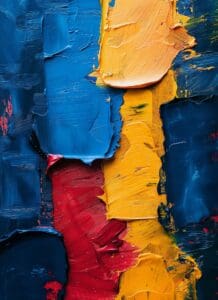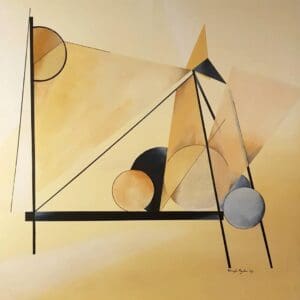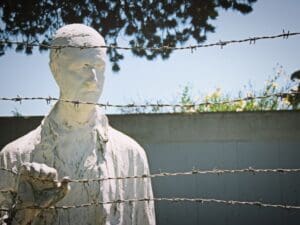Pieter Cornelis (Piet) Mondriaan or Piet Mondriaan or Piet Mondrian (March 07, 1872-February 01, 1944), was a Dutch painter, known to the world as the “Father of Geometric Abstraction.” Mondrian revolutionized the world of art with his De Stijl art movement in the early 20th century thereby paving the way for the future artists to understand art with a very different perspective.
Born in Amersfoot, Netherlands, the painter was exposed to the nuances of art at a very young age. In 1892, he joined the Academy for Fine Art in Amsterdam, as a teacher. He kept his artistic interests alive by largely painting landscapes. The Hagues Geemente Museum has a collection of these early works of Piet. Notable amongst them are ‘The Red Mill (1910-11),’ ‘Trees in Moonlight,’ and ‘Avond (Evening, 1908).’ These paintings were unique, as he used only primary colors in them. Over the years, a gradual change in Mondrian’s style of painting was observed. Up to 1908, his work was more Naturalistic and Impressionistic, which graduated in 1909-10 to Pointillism and Fauvism, shifting finally to Cubism in 1911. His painting titled “Still Life with Ginger Pot” reflects the transition.
Mondrian moved to Paris in 1912 and then to Netherlands in 1914. It was during this period that World War 1 began. In this phase, he met artists such as Bart van der Leck and Theo Van Doesburg, who inspired Mondrian to develop his own style of painting. He named this style as “Neo-Plasticism,” which was based on a harmonious coexistence of straight lines and pure colors. The artist also published his essays on abstract art in the De Stijl periodical. He published “De Nieuwe Beelding in de Schilder Kunst” in twelve installments.
After the war, the painter returned to France in 1919 and remained there until 1938. During this time, Piet’s grid based paintings, beginning with thin, gray rectangular forms filled with primary colors, evolved eventually to forms with thick black lines. Further changes were seen in Mondrian’s ‘Lozenge’ paintings. Notable of these were “Composition with Blue and Composition in White and Blue (1926),” which is considered to be an extreme in minimalistic painting. In 1933, the artist experimented with colored lines as was seen in his paintings ‘Lozenge Composition with Four Yellow Lines,’ “Composition (1938),” and “Place de la Concorde (1943).” In 1940, Piet Mondrian moved to New York and his project in 1942 was titled ‘New York City,’ which is a lattice of red, blue, and yellow lines. In 1942-43, he painted the shimmering ‘Broadway Boogie Woogie.’ He also held his first solo show at the Valentine Dudensing Gallery in 1942. From 1942-44, Mondrian worked on ‘Victory Boogie Woogie,’ which unfortunately remained unfinished. The painter died on February 01, 1944, of Pneumonia, at Brooklyn, New York. All of Mondrian’s paintings are influenced by a confluence of his belief in Theosophy and his two dimensional interpretation of nature.
Source by Annette Labedzki
Disclaimer: The views and opinions expressed in this article are those of the authors and do not necessarily reflect the official policy or position of Irish Artmart.





